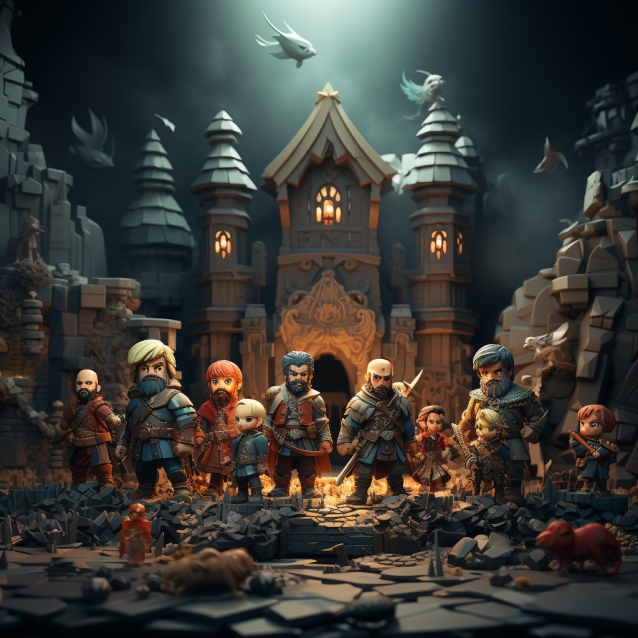All About Low Poly Models
Low poly models have become the cornerstone of countless successful projects, and they're sure to play a key role in your future work as well.
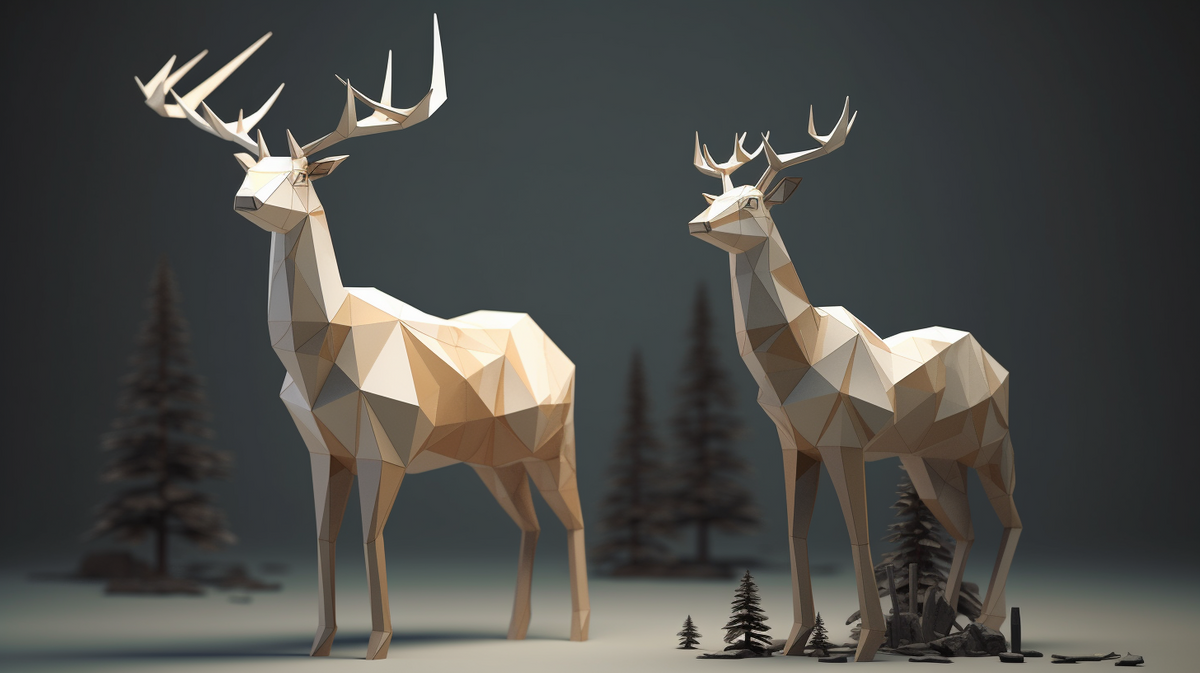
Every successful 3D project starts with the right foundation, and that foundation is the tools you use. Low poly models have become the cornerstone of countless successful projects, and they're sure to play a key role in your future work as well.
So, what exactly are low poly models? The term "poly" comes from "polygon", which is a shape made up of straight lines that connect at different points. In 3D modeling, these polygon shapes are used to create the surface of an object. A "low poly" model simply means that the model has a low number of these polygon shapes, which makes the model less complex and easier to work with.
What makes a low poly model?
- Polygon constraint: A hallmark of low poly models is their reduced polygon count, with a typical range from a few thousand to tens of thousands, compared to high polygon models that boast hundreds of thousands or even millions of faces.
- Model minimalism: Low poly models prioritize simplicity, showcasing basic shapes and limited details, in contrast to the intricate design of high polygon models.
- Texturing techniques: To enhance the visual appeal of low poly models, techniques such as normal maps and ambient occlusion maps are utilized to give the illusion of more detail.
- Illumination design: Successful low poly models feature carefully planned lighting that accentuates details and adds depth. This is achievable through the use of shaders and light mapping.
- Animated articulation: To animate low poly models, rigging and animation techniques such as bones may be necessary to control the movement of various components of the model.
Techniques to create low poly models:
- Simplification: This technique involves reducing the complexity of a high polygon model by eliminating small details and smoothing out rough edges. This is particularly useful in real-time applications, such as video games, where high levels of detail are not necessary.
- Decimation: This technique involves breaking down a high polygon model into smaller parts and then simplifying each part. This is a useful approach for creating low polygon models that retain the overall shape of the original model.
- Edge split and crease: This is the process of adding edge loops to a model to increase the level of detail in specific areas. This technique can be used to add detail to a low polygon model without increasing the overall polygon count.
- Sculpting and retopologizing: This is the process of sculpting a high polygon model and then retopologizing it to create a low polygon version. This can be done using various software tools.
Learn how to create low poly models
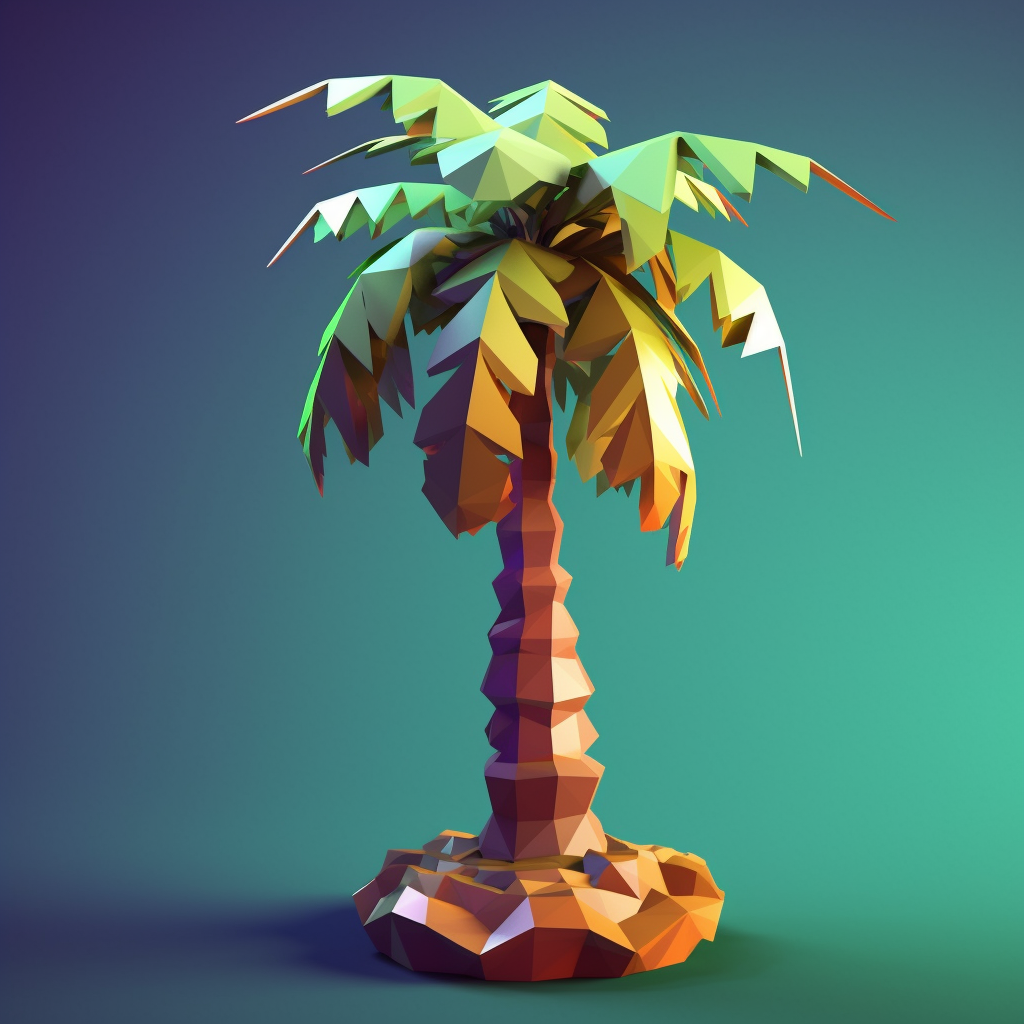
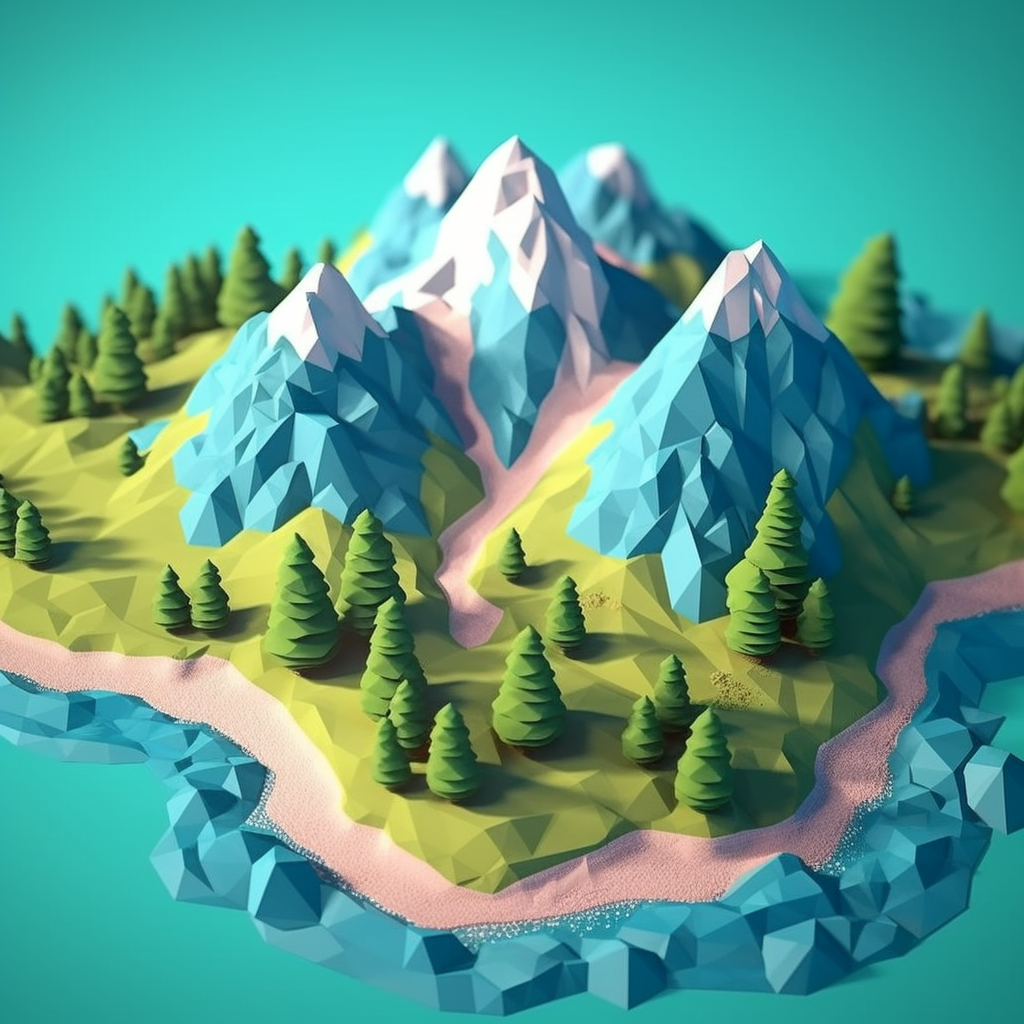
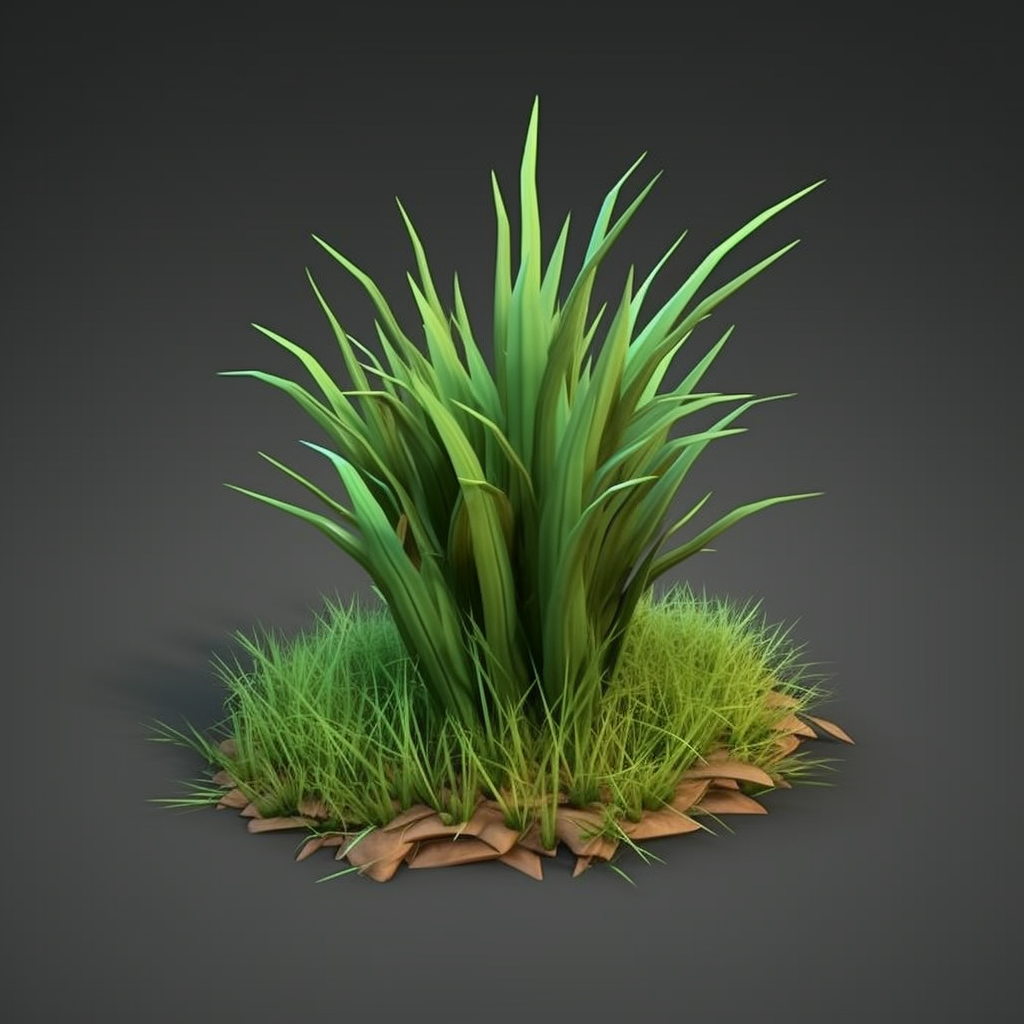
Benefits of low poly models
- Faster rendering times: Quicker render times are achieved with low poly models due to their fewer polygon faces, making them crucial for real-time applications such as video games and virtual reality where fast rendering is a must.
- Smaller file sizes: Low poly models have fewer polygon faces, which means that they require less data to be stored. This results in smaller file sizes, making them easier to transfer and work with, particularly in situations where bandwidth is limited.
- Lower memory requirements: Computers and devices with limited memory and processing power can still make use of low poly models as they demand less memory for storage.
- Ease of manipulation: Changes and adjustments to low poly models are easier as they have fewer vertices and edges. This is especially important in architectural visualization where designers need to make changes quickly and smoothly.
- Unique aesthetic: Low poly models have a unique, stylized aesthetic that is different from the realism of high polygon models. This aesthetic can be used to create visually interesting and engaging designs, particularly in gaming, animation, and advertising.
Various applications of low poly models, including in:
- In the world of gaming, low poly models provide quicker rendering times, smaller file sizes, and lower memory requirements, which is particularly beneficial for mobile and indie games where hardware limitations can be a concern. The distinctive stylized look of low poly models also adds a unique aesthetic to the game design.
- In virtual and augmented reality, low poly models offer a balance between visual detail and performance, allowing for the creation of complex 3D scenes in real-time. This is crucial in immersive experiences, where fast rendering is vital to maintaining user engagement.
- In film and animation, low poly models provide a cost-effective solution for creating 3D assets without sacrificing aesthetic quality. Additionally, low poly models require fewer resources and are easier to manipulate, making them a more efficient option in animation production pipelines.
- Advertisers and marketers can benefit from low poly models by creating visually appealing content in a fast and efficient manner, without sacrificing the quality of the final output.
- In architecture and interior design, low poly models offer a flexible and fast means for visualization and design iteration, allowing for quicker design decisions and improved communication with clients.
- In training and simulation, low poly models offer a cost-effective and efficient solution for simulating real-life scenarios, preparing individuals for various situations, particularly in the military.
- In the art and design industry, low poly models offer a unique and visually striking style that can be utilized to create stunning designs and installations, differentiating them from the traditional, photorealistic models produced by high polygon models.
Challenges in creating a low poly models
- Maintaining Rigidity and Structure: Low poly models typically have fewer vertices and edges than high poly models, which can make it difficult to maintain their structure and rigidity. This can be particularly challenging when modeling complex shapes or objects with curves and contours.
- Balancing Polygon Count: One of the main challenges of creating low poly models is balancing polygon count with the desired level of detail and realism. Too few polygon faces can result in a blocky, unrealistic model, while too many polygon faces can result in a model that is too complex and slow to render.
- Maintaining Edge Flow: Maintaining the flow of edges is critical for creating models that are optimized for animation and deformation. When creating low poly models, it's important to pay attention to edge flow and ensure that it is consistent and optimized for the intended use of the model.
- Balancing simplicity with detail: Finding the right balance between simplifying the model and retaining important details can be challenging. Too much simplification can result in a model that is unrecognizable, while too much detail can result in a model that is too complex.
- Maintaining consistency: When working with low poly models, it's important to maintain consistency in terms of polygon count, texture quality, and overall style. This can be difficult, especially when working with a team of artists with varying skill levels and aesthetic preferences.
- Ensuring compatibility: Low poly models need to be compatible with the target platform, whether it's a video game, virtual reality experience, or other application. This requires understanding the technical requirements and limitations of the platform, and designing the models accordingly.
- Dealing with animation: Low poly models can be challenging to animate, as they have fewer vertices and edges to work with. This requires a different approach to rigging and animating, and may require the use of additional tools and techniques.
- Texturing limitations: Texturing low poly models can be challenging, as the low polygon count can make it difficult to achieve the level of detail and realism desired. This requires a different approach to texturing, such as the use of normal maps, which can help to add detail to the surface of the model.
- Coping with Complex Shapes: Complex shapes and details can be difficult to recreate in low poly models, especially when using manual modeling techniques. This requires a skilled and experienced 3D artist to be able to effectively capture the essence of the shape while minimizing the number of polygons. In some cases, it may be necessary to simplify the shape or make compromises in order to maintain a low polygon count.
Tools used to create low poly models
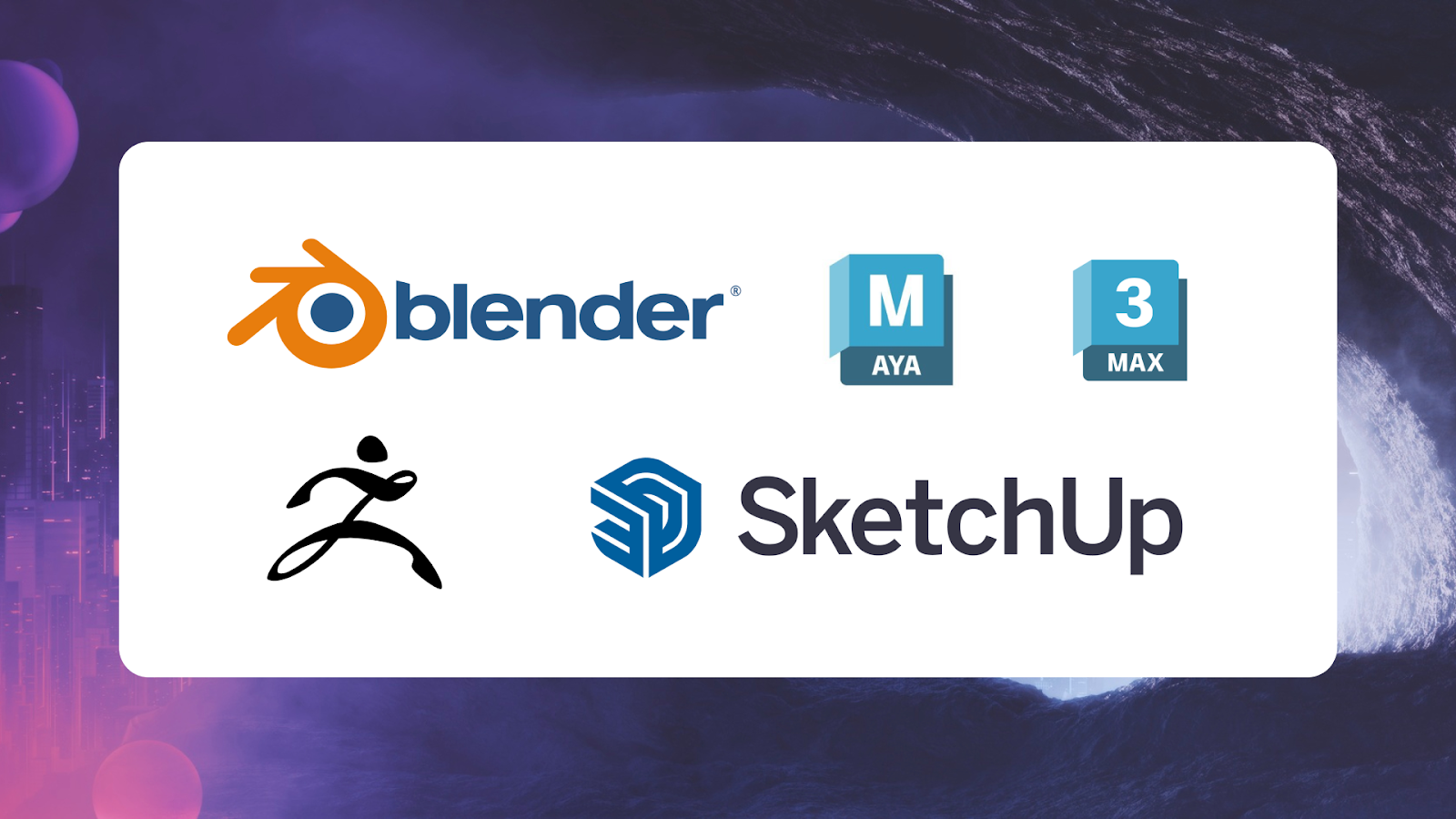
- Blender: An open-source and free tool that encompasses a variety of features for 3D modeling, texturing, and rendering.
- 3ds Max: This professional 3D modeling software is commonly used in entertainment and architecture.
- Maya: A widely utilized 3D modeling software, popular in the film, animation, and game development industries.
- ZBrush: A digital sculpting software allowing artists to produce high-resolution models that can then be retopologized into low polygon models.
- SketchUp: A simple yet effective 3D modeling software, frequently employed in the architecture and interior design fields.
Games that featured and popularized low-poly models
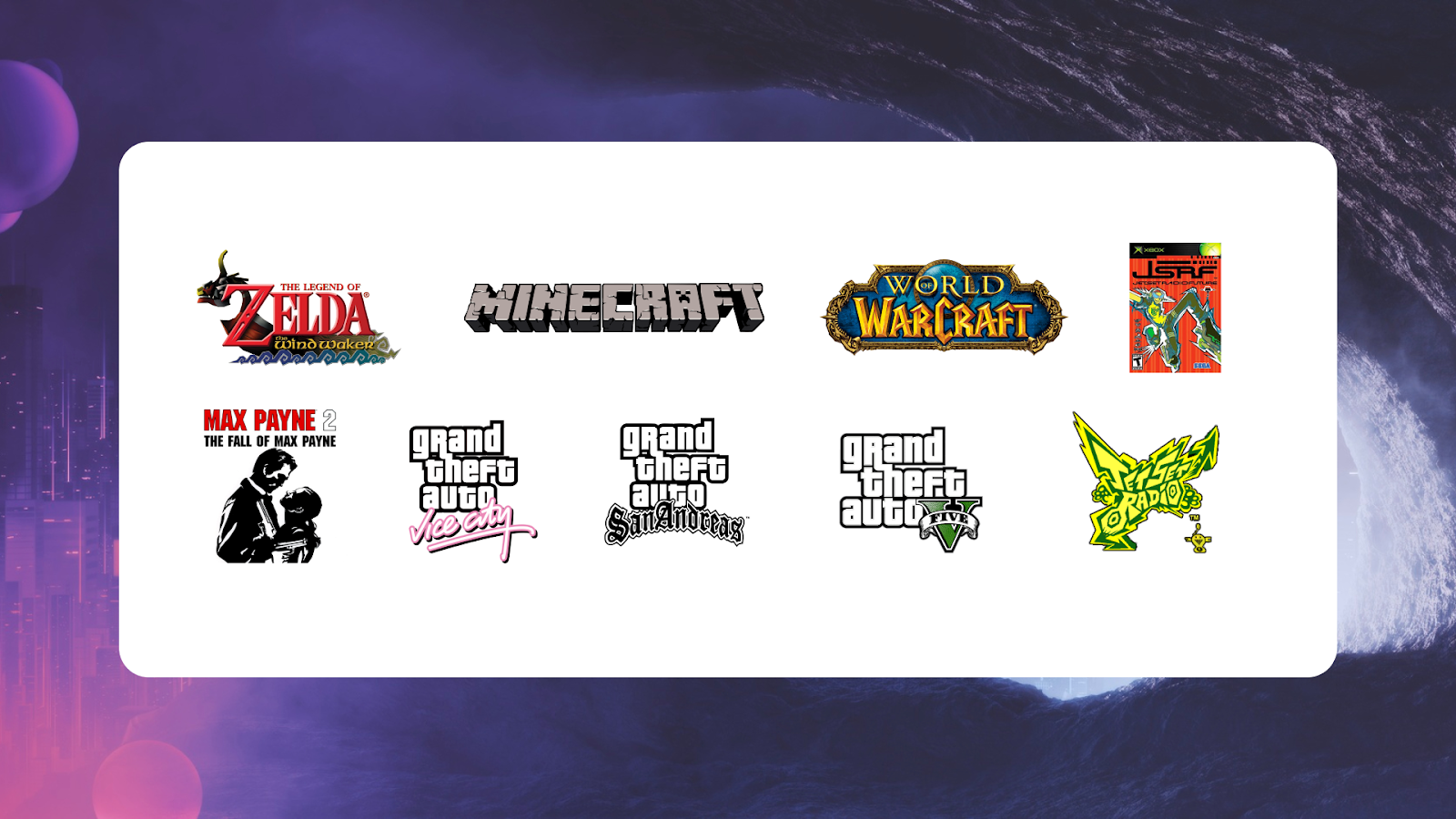
- The Legend of Zelda: The Wind Waker" (2002)
- Jet Set Radio Future (2002)
- Grand Theft Auto: Vice City (2002)
- Max Payne 2: The Fall of Max Payne (2003)
- World of Warcraft (2004)
- Grand Theft Auto: San Andreas (2004)
- Minecraft (2011)
- Grand Theft Auto V (2013)
Use of low-poly models outside gaming
Architecture and interior design visualization:
- The Burj Khalifa in Dubai, a low poly model was used to visualize the design and plan the construction of the world's tallest building.
- The interior design of the Apple Store, a low poly model was used to plan the layout and design of the retail space.
Product design:
- The Tesla Model S, a low poly model, was used to create a virtual prototype of the electric vehicle and test its design before committing to physical prototypes.
- The Xbox game controller, a low poly model, was used to test the ergonomics and design of the controller before mass production.
Film and television:
- The Lord of the Rings trilogy, low poly models were used to create the fantastical environments and creatures in the films.
- Star Trek: The Next Generation, low poly models were used to create the USS Enterprise and other starships in the series.
Medical and scientific visualization:
- The Human Genome Project, low poly models were used to visualize and understand the structure of DNA and the genetic code.
Military and defense simulation:
- The U.S. Army's Advanced Gunnery Training System, low poly models were used to create virtual battlefields and test soldiers' marksmanship skills.
- The U.S. Navy utilized low poly models in their Weapon System Trainers to simulate ship-to-ship combat and provide weapons system training for sailors.




